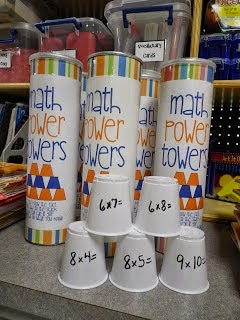Research shows that fine motor skills are linked to success in writing and academics. I just HAVE to share some of the super fun activities that we we used for our fine motor workshop last fall. They are geared towards students in Kindergarten, first grade, and second grade, but the activities are so fun that even I had fun! This post contains affiliate links; read more about them at the bottom of this post!
One of my friends from my undergraduate days,
Christie Kiley, is a pediatric occupational therapist and has a blog with many wonderful ideas! I help contribute to one of her fine motor boards on
Pinterest, and this workshop encourages many
fine motor skills that she explains on her blog. Here's a snippet:
Pincer grasp: Pinching with thumb and index finger.
Finger isolation: Activating a single finger on command (such as the index finger for pointing and pushing).
Thumb opposition: Coordinating the thumb with the other fingers to help with holding, squeezing, and strengthening the space between thumb and index finger (known as the “web space”).
Tripod grasp: Pinching with thumb and index finger while resting the object on the middle finger, much like you’d hold a pencil.
Hand-eye coordination: Coordinating hand movements based on what the eyes are seeing. Also known as visual-motor integration.
Bilateral coordination: Coordinating the use of two hands to accomplish a task, such as stabilizing an object with one hand while working with the other.
Midline integration: Being able to come to and cross over the invisible line that separates the left and right sides of the body. This contributes to the
development of hand dominance. If your child struggles with this, encourage midline crossing by placing desired items on the side opposite the hand they are using so they have to reach across their body.
Here are some sample activities that we did together:
Students
dug up sight words and then wrote them in the sandbox. Each student went home with a set to use at home since we live so close to the beach. Use
non-toxic play sand
to keep it safe for little ones.
This activity helps strengthen those little muscles that support the pincer grasp. Make sure you use washable paint so that you can easily wipe the paint off of desks/tables/little hands.
so that you can easily wipe the paint off of desks/tables/little hands.
These
sensory bags are great for all students, but especially for those with sensory processing difficulties. We practiced prewriting skills and letter formation with these bags. You can use this
non-toxic orange hair gel
for a bright and fun pop of color.
is great for practicing that tripod grasp that helps with writing. Students practiced making patterns, letters, numbers, and pictures. You can use an old bulletin board at home, or use these
cork tiles
to set up a rotation station. I'm loving these
push pins to make it extra fun. What kid doesn't love decorative office supplies?!

Here's a
three-for-one activity that practices letter recognition, spelling, AND fine motor all at once. These
bright and colorful, wooden clothespins
are great for adding visual stimulation.
This is another pencil grasp activity that helps students hold onto pencils correctly. If you have a clothespin handy, try this one out at home.
What kid doesn't love
Play Dough and Legos?! Students practiced forming letters and numbers, and also created pictures using the Lego pieces. You can grab a
36-pack of Play Doh
and either let everyone keep a canister in their desk or have enough on hand so that you can divvy them up into your centers boxes/storage. If your home isn't littered with these little sharp corners of death all over the floor, you can grab this
Lego starter kit
or ask students in class if they have any extras at home that they'd like to donate.
This is great practice for
manipulating small objects. These
yellow and white golf tees
are easy to spot if they fall onto the floor (or into your carpet). How cute are these
glass marbles
?!
This is a great
competitive activity that encourages muscle control and coordination. Students are given one minute to grab as many as they can, and then we count and graph how many marshmallows each student grabbed. We love to incorporate math concepts when we can! Grab 40 pairs of
chopsticks
and set some aside for other centers.
This activity is great for correcting students that hold writing materials inefficiently AND for students that need to strengthen their hand muscles. We used a variety of materials to keep this one fun. If you can't find these at the Dollar Tree, you can order a set of
pom pom balls
for less than a latte AND use the leftovers for warm fuzzies (hot glue a pair of goggly eyes to the pom pom balls and give them to students when they say things to you or other students that make your heart feel warm and fuzzy)!
Our fine motor fun workshop began with a station rotation in which each student got to practice a series of skills on their own. One of the stations was one-on-one with the instructor. This allowed us to monitor and help each student in the workshop.
We hope you can replicate some fine motor fun with your students!
AFFILIATE LINKS: This post contains affiliate links, which means I receive a small commission if you make a purchase using this link. I purchased all of the items myself, and all of the opinions expressed here are my own.























